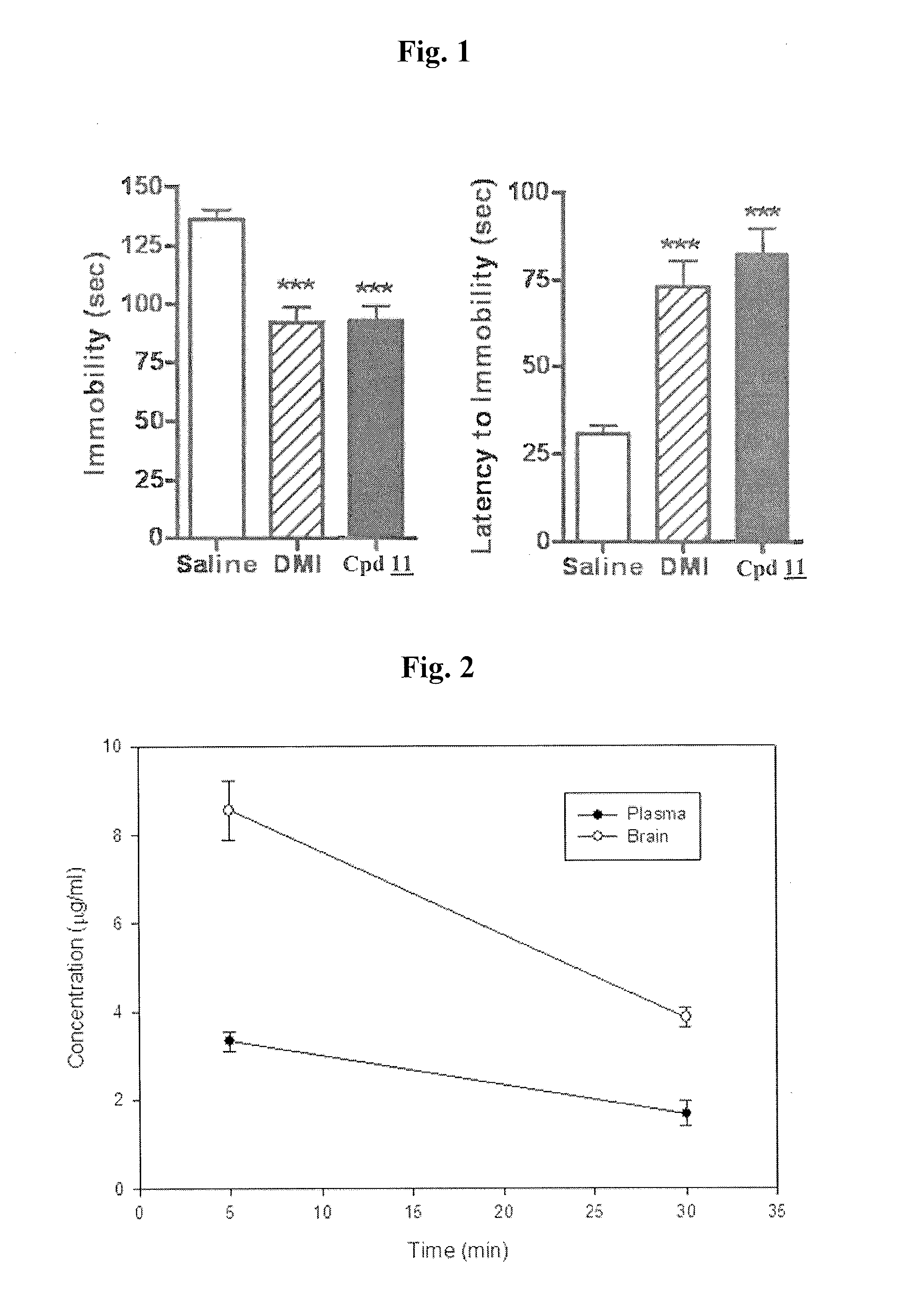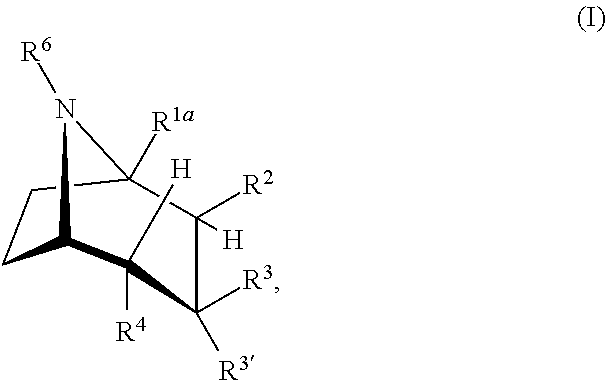Cocaine Analogs and Methods of Preparation and Uses Thereof
a technology of cocaine and analogs, applied in the field of cocaine analogs, can solve the problems of affecting the propagation of action potentials, affecting the reuptake function of dopamine transporters, and accumulating dopamine outside dopamine cells, so as to reduce the risk of pathology
- Summary
- Abstract
- Description
- Claims
- Application Information
AI Technical Summary
Benefits of technology
Problems solved by technology
Method used
Image
Examples
examples
[0417]The invention is described hereafter with reference to the following examples. The examples are provided for the purpose of illustration only and the invention should in no way be construed as being limited to these examples, but rather should be construed to encompass any and all variations that become evident as a result of the teaching provided herein.
Materials & Methods
[0418]All reagents were used as received unless otherwise noted. Tetrahydrofuran (THF), diethyl ether (Et2O), dichloromethane (DCM), and toluene were purified by filtration on a Glass Contour Seca solvent purification system. Unless otherwise mentioned, all reactions were carried under argon atmosphere. Column chromatography was performed on silica gel, Merck grade 60 (230-400 mesh). Thin layer chromatography (TLC) plates were visualized with UV, in an iodine chamber, or with phosphomolybdic acid, unless otherwise noted. 1H NMR and 13C NMR spectra were recorded on a Bruker 500, a Bruker 400 and Varian 300 MH...
example a
Preparative Example A
(S)-(+)-3-(2-methyl-1,3-dioxolan-2-yl)-propylidene-p-toluenesulfmamide (2)
[0419]was prepared as previously described (Davis et al., 2009, Org. Lett. 11:1647-1650).
example b
Preparative Example B
(S)-(+)-3-(2-Propyl-1,3-dioxalan-2-yl)propylidene-p-toluenesulfinamide (2b)
[0420]
[0421]To a 500 mL round-bottomed flask equipped with magnetic stirring bar and argon inlet was placed 4,4-ethylenedioxy-4-propylbutanol (2.22 g, 12.88 mmol) in dry CH2Cl2 (100 mL). (S)-(+)-p-Toluenesulfinamide (1.99 g, 12.88 mmol) was added followed by Ti(OEt)4 (14.71 g, 64.45 mmol) and the reaction was stirred at room temperature (“rt”) for 48 hours. At this time, the reaction mixture was cooled to 0° C. and then quenched with H2O (6 mL). After stirring for 5 min., the solids were filtered, the filter cake was washed with DCM (3×50 mL), the combined organic phases was washed with brine (100 mL), dried (MgSO4), and concentrated. Flash chromatography (25% EtOAc / hexanes) gave 2.79 g (70%) of slightly yellow oil; IR (film) 1625 cm−1; [α]D20+230.17; (c 0.6, CHCl3); 1H NMR (CDCl3) δ 0.89 (t, J=7.3 Hz, 3H), 1.36 (m, 2H), 1.55 (m, 2H), 1.96 (m, 2H), 2.39 (s, 3H), 2.55 (m, 2H), 3.86 (m, 4H)...
PUM
| Property | Measurement | Unit |
|---|---|---|
| Temperature | aaaaa | aaaaa |
| Temperature | aaaaa | aaaaa |
| Temperature | aaaaa | aaaaa |
Abstract
Description
Claims
Application Information
 Login to View More
Login to View More - R&D
- Intellectual Property
- Life Sciences
- Materials
- Tech Scout
- Unparalleled Data Quality
- Higher Quality Content
- 60% Fewer Hallucinations
Browse by: Latest US Patents, China's latest patents, Technical Efficacy Thesaurus, Application Domain, Technology Topic, Popular Technical Reports.
© 2025 PatSnap. All rights reserved.Legal|Privacy policy|Modern Slavery Act Transparency Statement|Sitemap|About US| Contact US: help@patsnap.com



